Uttapam or Uthappam is a delicious South Indian tiffin breakfast of thick pancakes made with either idli batter or dosa batter. It is a popular and healthy breakfast choice like idli and dosa. Here I share uttapam recipe from scratch made with fermented rice and urad dal batter. These soft and crispy fermented pancakes are gluten-free as well.
I have shared here three ways to make Uttapam.
- Plain Uttapam – Also known as Sada Uttapam
- Onion Uttapam – Topped with onions
- Onion Tomato Uttapam – Made with a mix of onions and tomatoes (mentioned only in the recipe card)
Classic Uttapam Recipe
In this uttapam recipe I have shown the method of making them with a multi-purpose batter that can be used to make idli and dosa as well. The entire steps of soaking rice and lentils, to grinding and fermenting the batter is shown in detail.
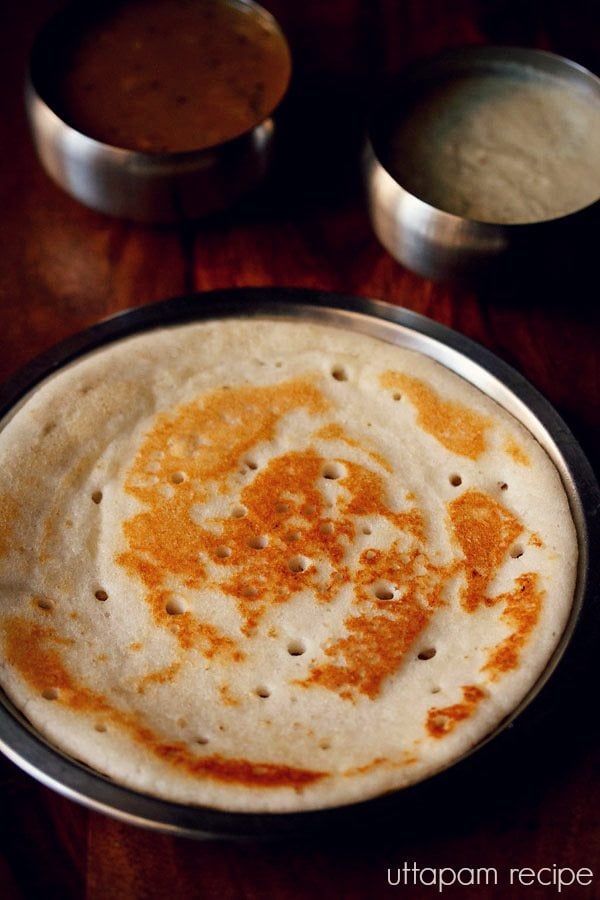
You can also make them with leftover dosa batter or idli batter.
As with any fermented batter or dough, temperature plays a crucial role in the fermentation process. So make sure that you keep the batter in a warm place or ferment for a longer time, if the temperature is on the cooler side in your city.
With this batter recipe, you can also make idli on the first day after the batter is fermented and uttapam on the second day.
Serve them with coconut chutney and sambar by the side and have a delicious South Indian breakfast or brunch. It can also be packed for lunch box and they will remain soft.
How to make Uttapam Recipe
Soaking
1. In a bowl take ½ cup husked whole urad dal (husked black gram) and ¼ teaspoon fenugreek seeds (methi seeds). You can also use split husked urad dal instead of husked whole urad dal.
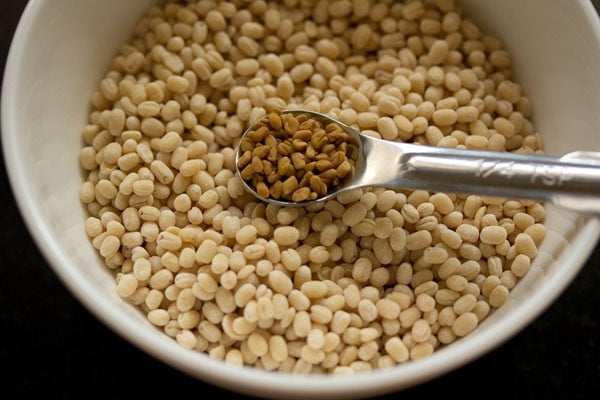
2. Rinse both the urad dal and fenugreek seeds for a couple of times in fresh water.
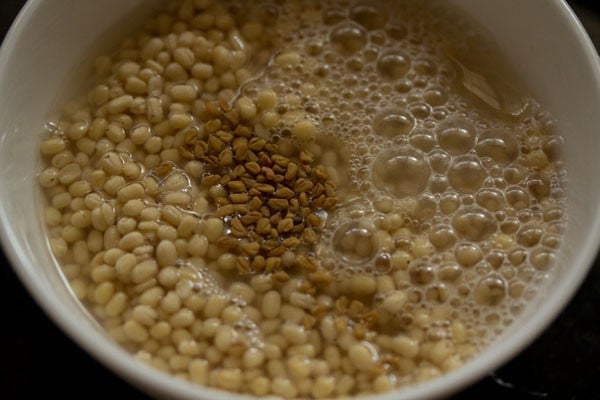
3. Then soak in 1 cup water for 4 to 5 hours.
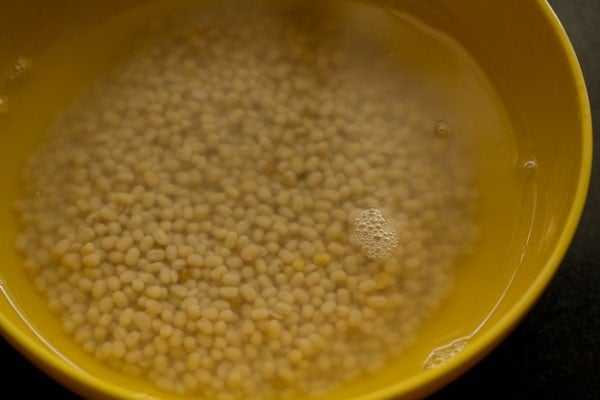
4. In another bowl take 2 cups parboiled rice or idli rice.
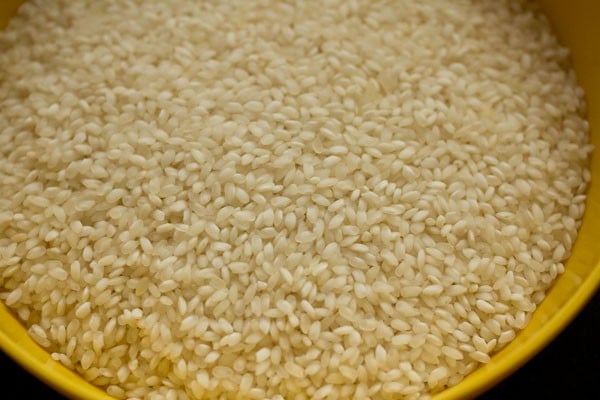
5. Rinse the parboiled rice or idli rice a couple of times. Keep aside.
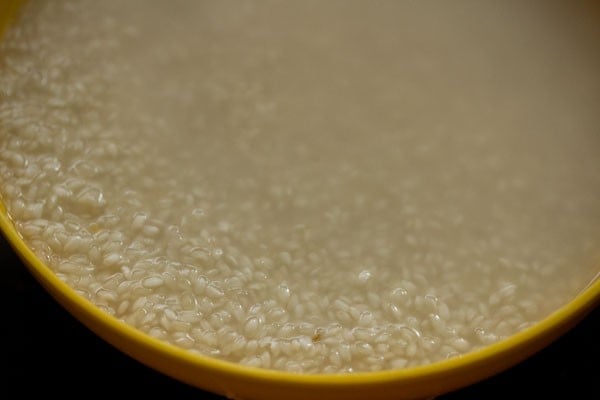
6. Add 2 cups of water. Mix well and soak everything for 4 to 5 hours.
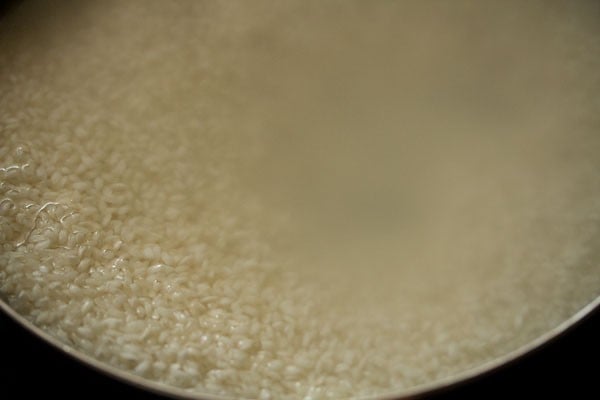
Making Batter
1. Strain the urad dal and reserve the water. Keep this water for blending or grinding the dal.
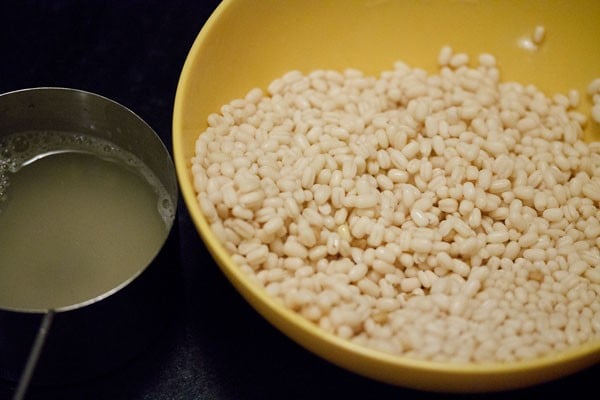
2. Use the wet grinding blade in the jar for blending both urad dal and rice. Add the strained urad dal in the grinder or blender jar.
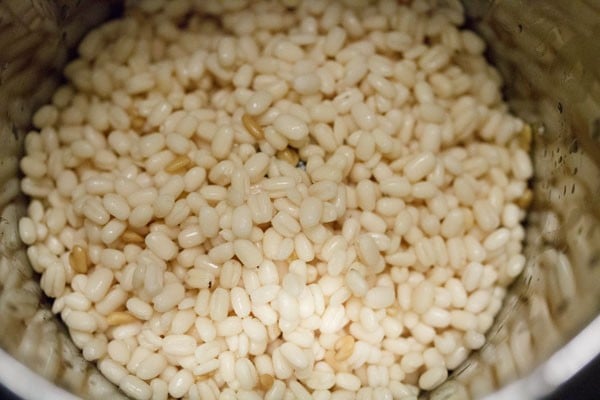
3. First add ¼ cup of the reserved water and blend for some seconds. Then add the rest of the ¼ cup water and continue to blend till the batter is light, smooth and fluffy.
If the mixer becomes too hot while blending, then stop. Let the mixer cool down and blend again. Quantity of water depends on the freshness of urad dal. I always add ½ cup water for blending ½ cup of urad dal.
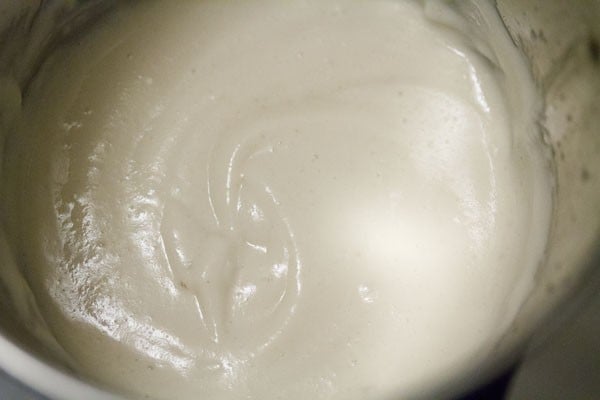
4. Pour the urad dal batter in a large bowl or pan. The batter should be fluffy, smooth and light.
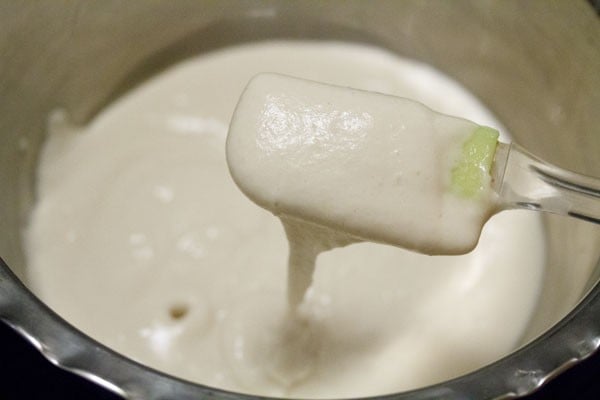
5. To the same jar, add half of the strained rice.
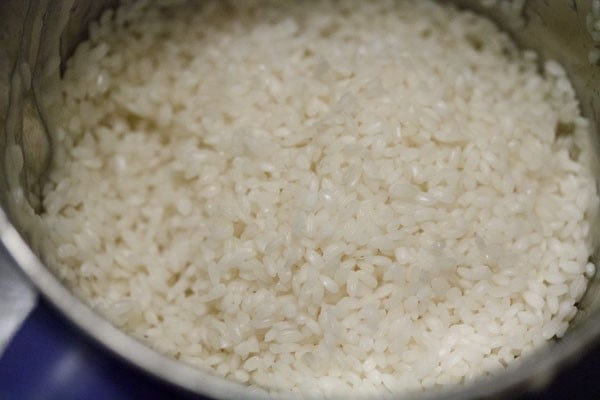
6. Add ¼ to ½ cup water and blend till smooth. A fine grainy consistency of rice is also fine in the batter. You can blend the rice in two to three batches.
I blend the soaked rice grains in two batches. For rice, I always end up adding overall ¾ cup water and a few tablespoons more of the water at times.
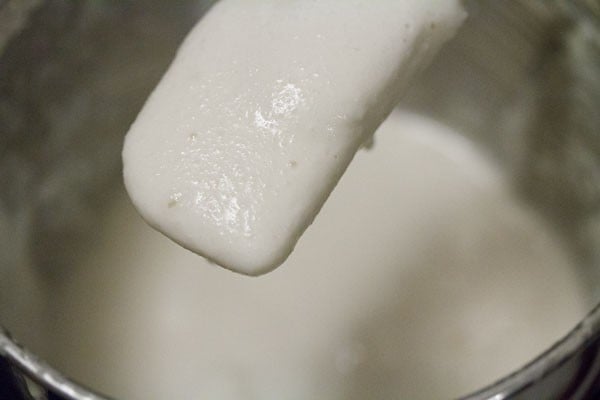
7. Pour the rice batter in the bowl containing the urad dal batter.
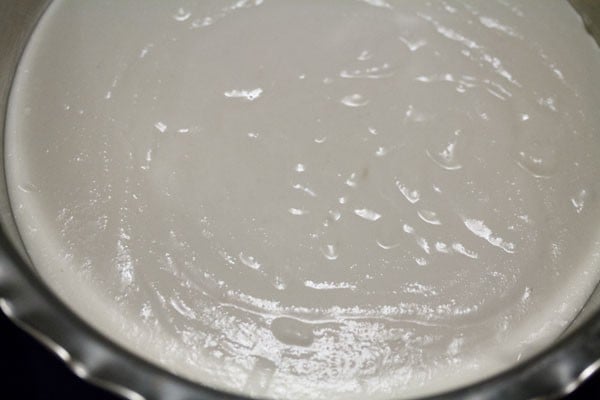
8. Add 1 teaspoon rock salt or as per taste. In very cold temperatures, avoid adding salt. Instead, add ¼ teaspoon sugar. Sugar aids in the fermentation process.
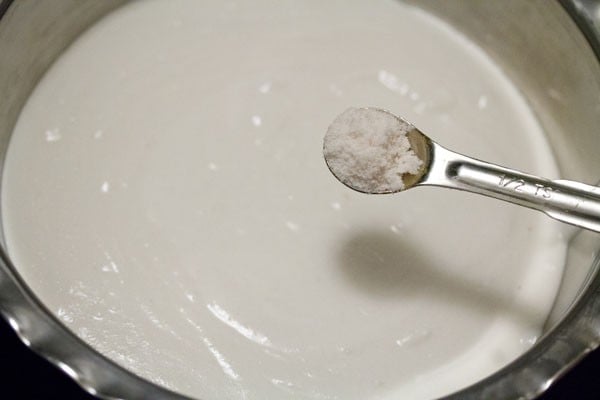
8. Mix both the batters very well with your hands or a spoon or spatula.
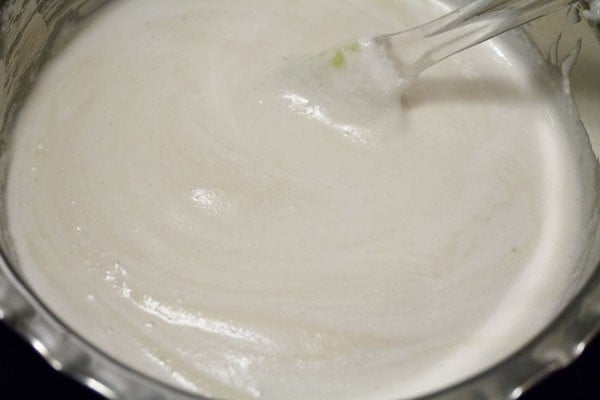
9. Cover and allow the batter to ferment overnight for 8 to 20 hours. The timing will vary depending on the temperature conditions in your city.
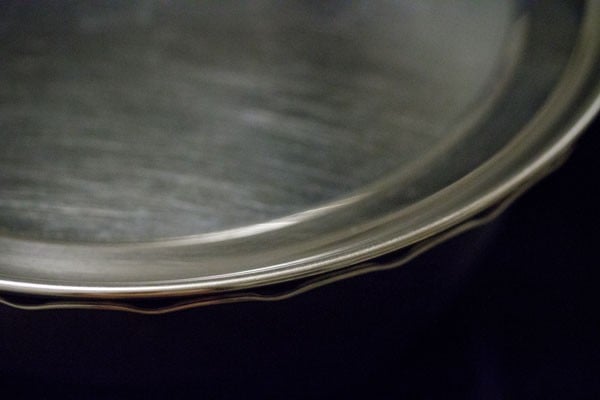
10. The fermented batter the next day. The batter after fermentation will increase in volume and become double or triple. You will also see many tiny air pockets in the batter with a pleasant sour aroma.
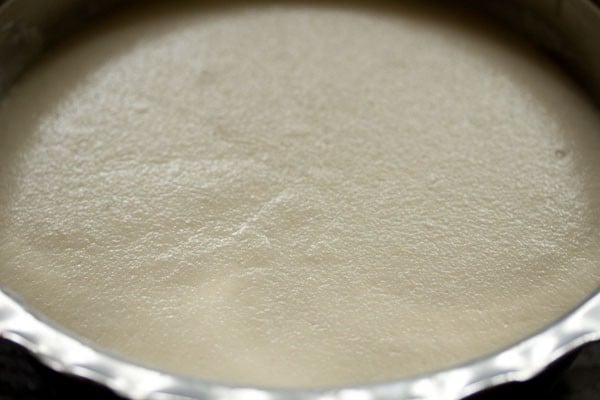
11. Just lightly stir the batter. Check the consistency. If the batter looks too thick, you can add about ⅛ to ¼ cup water or more if required. Mix well.
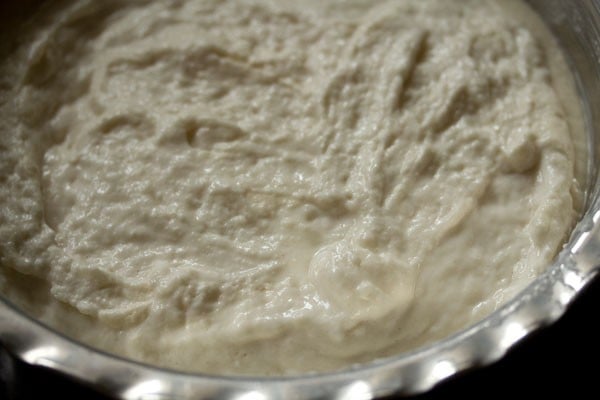
Making uttapam
12. Heat up a tawa or a cast iron pan or skillet.
Brush or spread any neutral flavored oil on the skillet. Pour the batter with a ladle or spoon. For a non-stick pan, you need not grease the pan.
The skillet has to be hot. While making uthappams, you can regulate the flame from low to high. Before pouring the batter, reduce the flame to low.
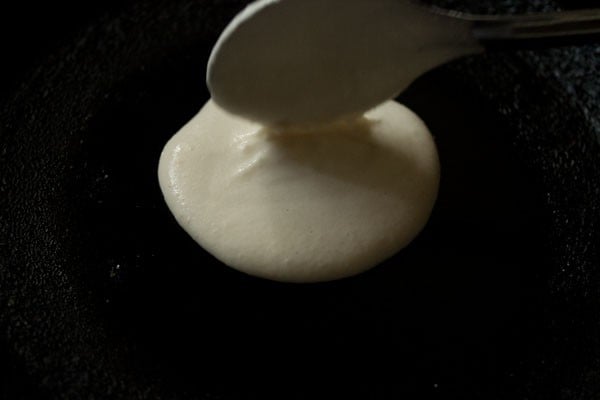
13. Gently spread the batter to a thick pancake.
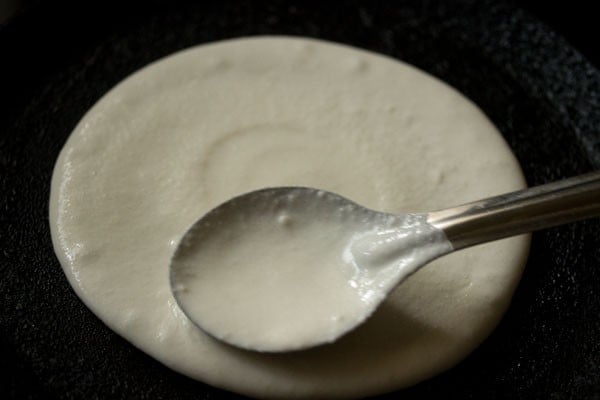
14. Cook them on a medium flame.
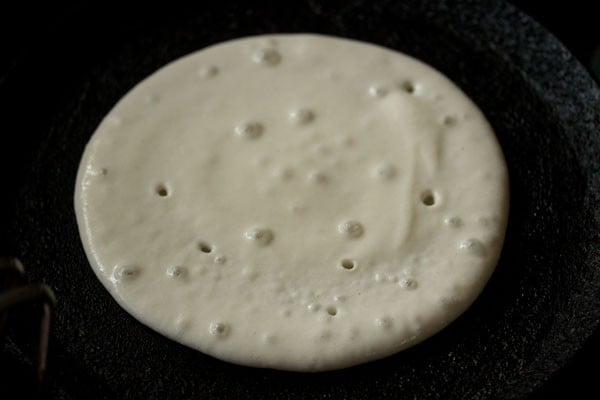
15. Drizzle some oil on the top and sides. You can also add butter or ghee instead of oil.
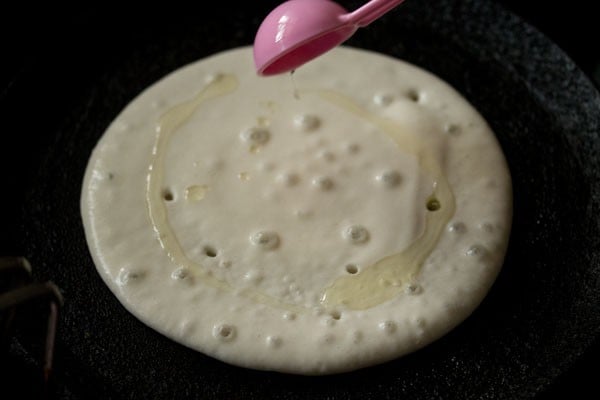
16. These pancakes takes a longer time to cook than dosa. Cook till the base is golden.
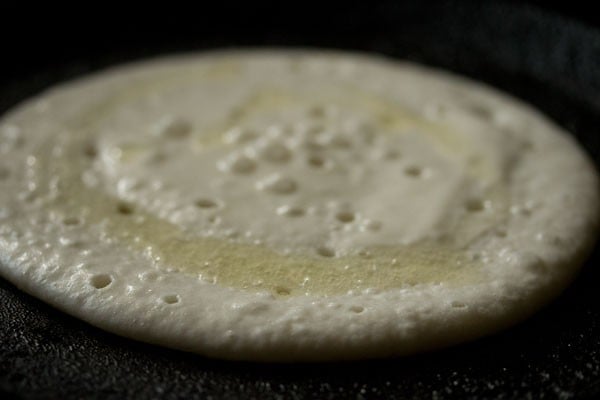
17. Then flip and cook the other side.
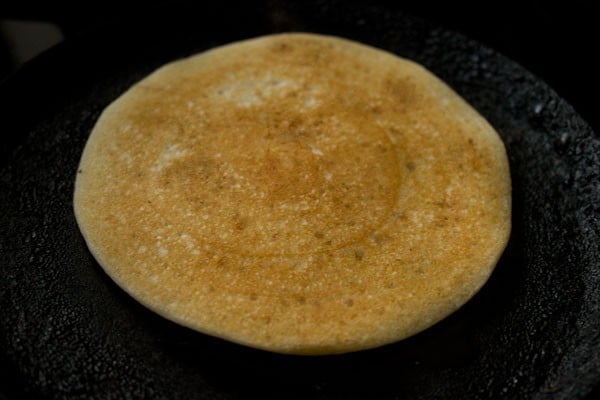
18. Both sides should be cooked well. Prepare them this way with the rest of the batter. You can also make idli or paniyaram or punugulu with this batter.
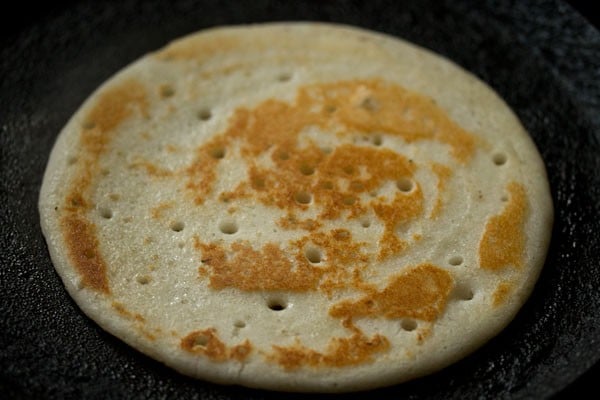
19. Serve these Uttapam hot or warm with coconut chutney and sambar. You can also pack them in tiffin box as they remain soft even after cooling at room temperature.
They also make for a healthy and comforting evening snack paired with your favorite chutney and filter coffee.
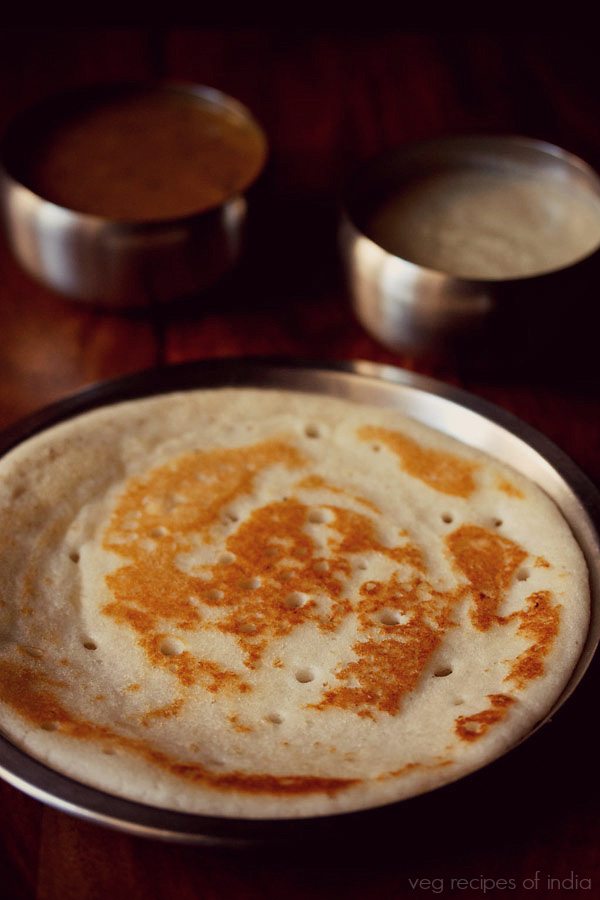
About Onion Uttapam
Onion uttapam is a popular uttapam variant where these pancakes are topped with onions. Either they can be topped only with the onions or additionally some heat and spice can be added in the onion topping like green chillies or red chilli powder.
Here I am showing two versions of onion uttapam that I prepare at home –
- Made with plain onions for kids
- Topped with a mix of onions, green chilies and herbs.
Instead of onions, you can also use shallots or pearl onions. The slightly caramelized sweet taste of onions blend very well with the taste of uttapam. Some sambar powder can also be sprinkled on the onions.
I have shown the step by step method of preparing the uttapam batter above. However, you can also use leftover idli batter or dosa batter to prepare onion uttapam.
How to make Onion Uttapam
1. Heat up a tawa or a cast iron pan or skillet. Brush or spread some oil on the tawa. For a non-stick pan, you need not grease the pan. The skillet has to be hot.
While making uttapam, you can regulate the flame from low to high. Before pouring the batter, reduce the flame to low.
2. Pour the batter with a ladle or spoon.
3. Gently spread the batter to a thick pancake.
First method
4. Add some chopped onions. With a spoon lightly press the onions on the uttapam so that they stick to the batter. You can sprinkle a pinch of salt if you want all over the uttapam.
5. Drizzle with some oil on the sides and on the uttapam. Cook on a medium flame.
6. When the base becomes golden and crisp, gently flip it using a spatula.
7. Cook the side with the onions till the onions caramelize. You can even gently press with the spatula so that some uncooked batter also gets cooked well.
If the uttapam is not cooked well, there will be raw uncooked batter in the center. So do make sure to cook it properly.
8. Flip over to check if this side is cooked well. The onions will also be caramelized. You can caramelize the onions more if you want.
Second method
9. In a plate take 1 cup chopped onions, 2 or 3 chopped green chilies, 12 to 15 curry leaves (chopped) and ⅓ cup chopped coriander leaves. Mix very well and keep aside.
10. Spread the uttapam batter on the tawa and top the mixture on the uttapam. You can sprinkle some salt and sambar powder if you want.
11. Drizzle some oil on the sides and top. Cook onion uttapam on a medium-low to medium flame.
12. Then turn over and cook till the uttapam, as well as the onions, are caramelized.
Serve onion uttapam hot or warm with coconut chutney and sambar. It is best to have these hot or warm. Don’t make in advance as later on you won’t get a better taste of the onions.
More Tasty Breakfast Recipes
This post is from the archives and has been republished and updated on 31 May 2021.
Please be sure to rate the recipe in the recipe card or leave a comment below if you have made it. For more vegetarian inspirations, Sign Up for my emails or follow me on Instagram, Youtube, Facebook, Pinterest or Twitter.
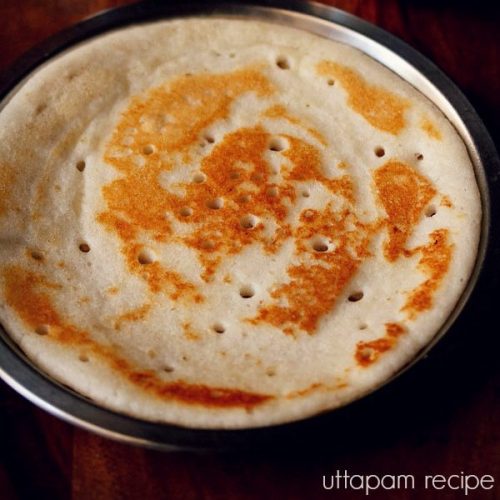
Uttapam Recipe
Ingredients
For Uttapam Batter
- 2 cups idli rice or parboiled rice or 400 grams parboiled rice or idli rice
- 2 cups water for soaking rice
- ½ cup whole husked urad dal or 120 grams whole husked urad dal
- 1 cup water for soaking urad dal
- ¼ teaspoon fenugreek seeds (methi seeds)
- ½ cup water for grinding urad dal or add as required
- ¾ cup water for grinding rice or add as required
- 1 teaspoon rock salt (edible and food grade) or non-iodized sea salt - add as required
For Onion Toppings
- 1 cup chopped onions or sliced shallots or pearl onions
- ⅓ cup chopped coriander leaves
- 12 to 15 curry leaves - chopped
- 2 to 3 green chilies - chopped
For Onion Tomato Toppings
- ½ to ¾ cup finely chopped onions
- ½ to ¾ cup finely chopped tomatoes
- 1 or 2 green chilies , finely chopped
- 1 to 2 tablespoon finely chopped coriander leaves (cilantro), optional
- oil or ghee or butter - add as required
- Pav Bhaji Masala or sambar masala or idli podi, add as required - optional
Instructions
Soaking rice and lentils
- In a bowl take the usked whole urad dal and fenugreek seeds. You can also use split husked urad dal instead of husked whole urad dal.
- Rinse both the urad dal and methi seeds for a couple of times.
- Then soak them in 1 cup water for 4 to 5 hours.
- In another bowl take the parboiled rice or idli rice. Rinse the parboiled rice or idli rice for a couple of times and keep aside.
- Add 2 cups of water. Mix well and soak everything for 4 to 5 hours.
Blending and Fermenting Batter
- Strain the urad dal and reserve the water. Keep this water for blending/grinding the dal.
- Use the wet grinding blade in the jar for grinding both urad dal and rice. Add the strained urad dal in the grinder or blender jar.
- First add ¼ cup of the reserved water and blend for some seconds. Then add the rest of ¼ cup water and continue to blend till the batter is light, smooth and fluffy. If the mixer becomes too hot while blending, then stop for a few minutes. Let the mixer cool down and blend again.
- Quantity of water depends on the freshness of urad dal. So add water as required.
- Pour the urad dal batter in a large bowl or pan. The batter should be fluffy, smooth and light.
- To the same jar, add half of the rice.
- Then add ¼ to ½ cup water and blend till smooth. A fine grainy consistency of rice is also fine in the batter. You can blend the rice in two to three batches. I blend in two batches. For rice I always end up adding overall ¾ cup water and a few tablespoons more of the water at times.
- Pour the rice batter in the bowl containing the urad dal batter.
- Add 1 teaspoon rock salt or as per taste. In very cold temperatures, avoid adding salt. Instead add ¼ teaspoon sugar. Sugar aids in the fermentation process.
- Mix both the batters very well with your hands or a spoon or spatula.
- Cover and allow the batter to ferment overnight for 8 to 20 hours. The timing will vary depending on the temperature conditions in your city.
- The batter should increase in volume and double or triple. It will also hava a pleasant sour aroma and many tiny air pockets.
- Just lightly stir the batter. Check the consistency. If the batter looks too thick, you can add about ⅛ to ¼ cup water or more if required. Mix well.
Making Uttapam
- Heat up a tawa or a cast iron pan, brush or spread some oil on the tawa. Pour the batter with a ladle or spoon. For non stick pan, you need not grease the pan. The tawa has to be hot. While making uttapams, you can regulate the flame from low to high. Before pouring the batter, reduce the flame to low.
- Gently spread the batter to a thick pancake. Note that the quantity of batter to make uttapam will be more than what you would normally use for a dosa. The uttapam should be thick.
- Cook them on a medium flame. Drizzle some oil on the top and sides.
- These takes a longer time to cook than dosas. Cook till the base is golden.
- Then flip and cook the other side.
- Both sides should be cooked well. Prepare the uthappam this way with the rest of the batter. You can also make idlis or paniyarams or punugulu with this batter.
- Serve Uthappam hot or warm with coconut chutney and sambar. You can also pack them in tiffin box as they remain soft even after cooling.
Making Onion Uttapam
- Before pouring the batter, reduce the flame to low. Pour the batter with a ladle or spoon. Gently spread the batter to a thick pancake.
- First method to make onion uttapam: Add some chopped onions on the uttapam as soon as you spread the batter. Lightly press the onions on the uttapam so that they stick to the batter. You can even sprinkle a pinch of salt.
- Drizzle with some oil on the sides and on the uttapam. Cook on a medium flame.
- When the base becomes golden and crisp, gently flip it with a spatula. Cook the side with the onions till the onions caramelize.
- You can even gently press with the spatula so that some uncooked batter also gets cooked well. If the uttapam is not cooked well, there will be raw uncooked batter in the center. So do make sure to cook it properly.
- Flip over to check if this side is cooked well. The onions will also be caramelized. You can caramelize the onions more if you want.
- Second method to make onion uttapam: In a plate take 1 cup chopped onions, 2 or 3 chopped green chilies, 12 to 15 curry leaves (chopped) and ⅓ cup chopped coriander leaves.
- Mix very well and keep aside.
- Spread the batter on the tawa and top the onion mixture on the uttapam.
- Drizzle some oil on the sides and top. Cook it on a medium-low to medium flame.
- Then turn over and cook till the uttapam as well as the onions are caramelized.
- Serve onion uttapam hot or warm with coconut chutney and sambar.
Making Onion Tomato Uttapam
- Mix the chopped onions, tomatoes, green chili, coriander together in a bowl.
- Spread the batter on the tawa or skillet.
- Top with the onion, tomatoes and chili mixture.
- Sprinkle a bit of pav bhaji masala or sambar masala or idli podi and salt on top of the veggies and uttapam. You can even sprinkle a pinch of salt.
- Add some oil or ghee or butter on the sides and top of the uttapam.
- Flip when the base is cooked and golden.
- Cook the side with the onions and tomatoes till the onions are softened or caramelized.
- Flip again if you see that the first side is not cooked or browned.
- When the onion tomato uttapam is crisp and cooked on both sides, then serve it hot with hot sambar and coconut chutney. You could also serve them with curd chutney or simple sweetened or plain curd.
- Serve them hot to have best taste. They won't taste so good once when cooled.
Video
Notes
- Type of Pan: Use a heavy tawa or skillet when making uttapam. A cast iron pan works very well. But make sure that your skillet or pan is seasoned or else the batter will stick to the pan.
- Cooking: Cook on a low to medium flame. They take a little more time to cook than dosas, as they are thick. I have had onion tomato uttapam in a couple of restaurants where the outside was crisp and cooked but the inside of the uttapam was not cooked. I could literally taste the batter. You don’t want your uttapam to taste like this. So avoid cooking on a high flame.
- Fat: They can be made with either oil or ghee or butter. But they taste better when made with ghee or butter.
- Fermentation Tips:
- A warm temperature is very crucial for fermentation of the batter. If you live in a cool place or a cold city, then keep the batter near a heater or in a warm place.
- You can keep the batter in a lit oven. If you do not have a light in the oven, then preheat the oven for 5 to 7 minutes till it is warm. Switch off the oven and place the bowl inside the oven.
- You can even ferment the batter in an Instant Pot. Using the yogurt function, set to less mode. Do not use normal mode. Cover with the Instant Pot glass lid.
- If you use the Instant Pot regular l lid then keep the valve in the venting position (not the sealing position) as the lid can get locked. Set a time of 8 to 12 hours depending on the temperature in your city.
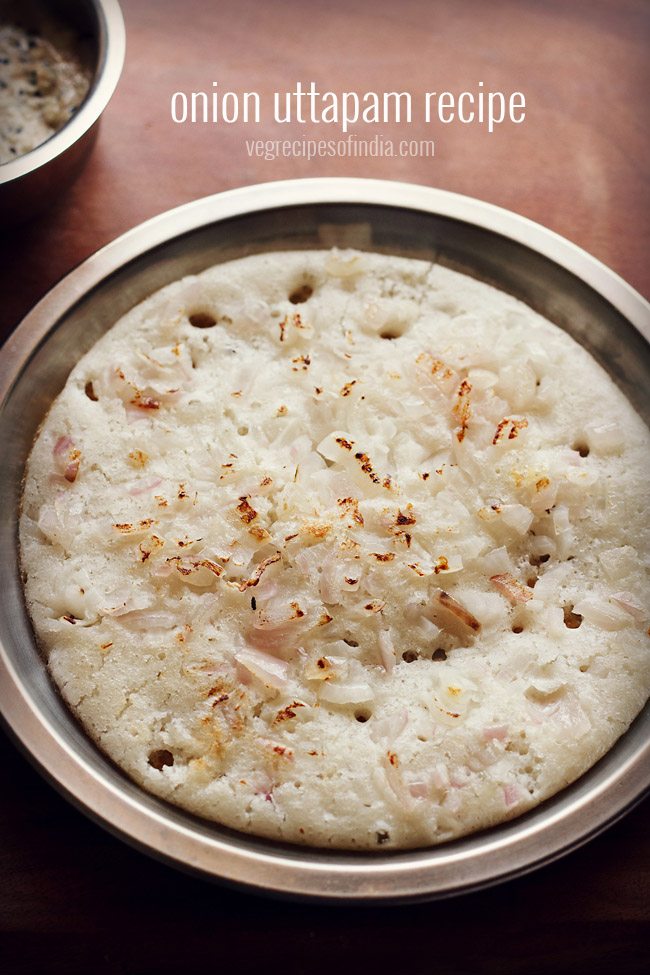
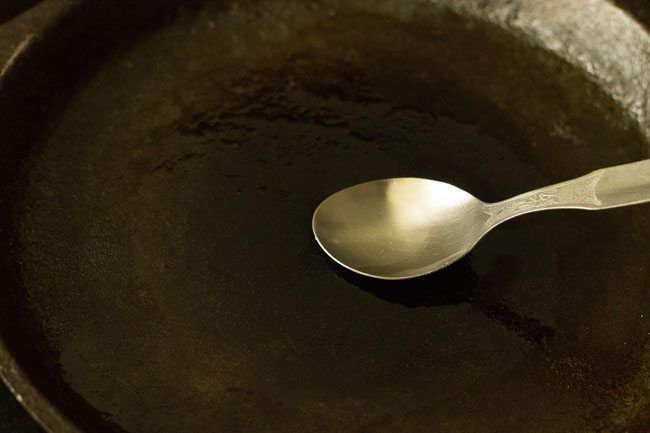
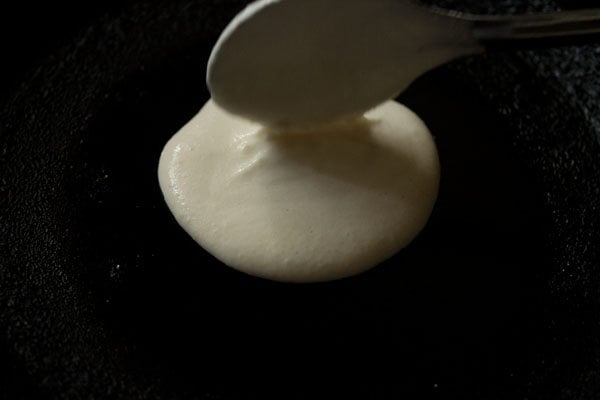

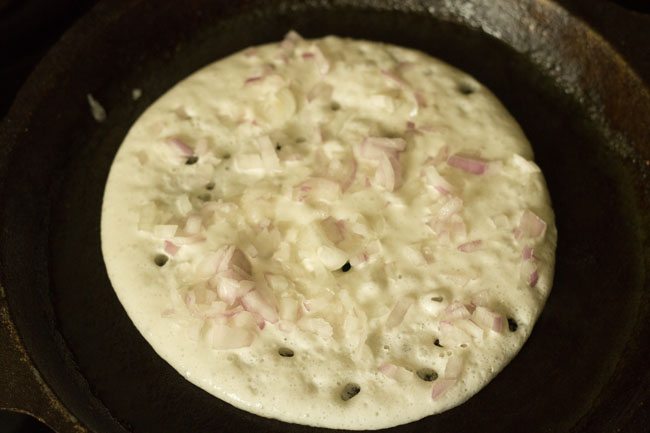
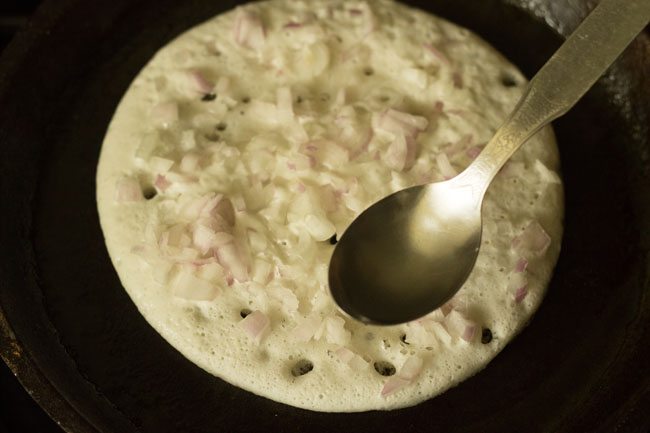
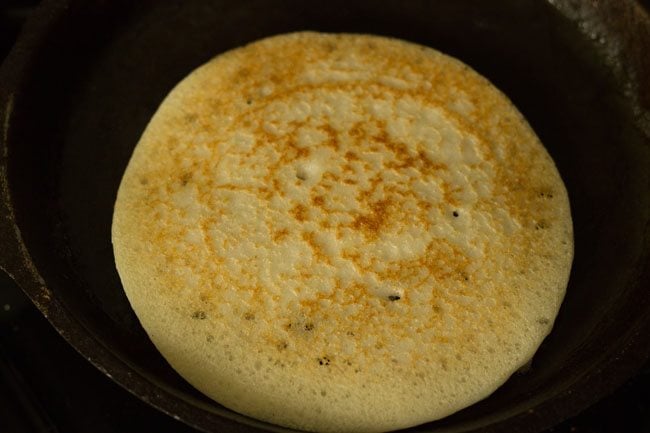
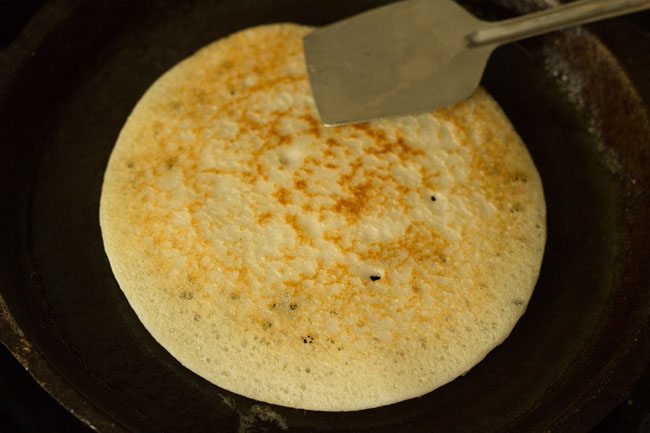
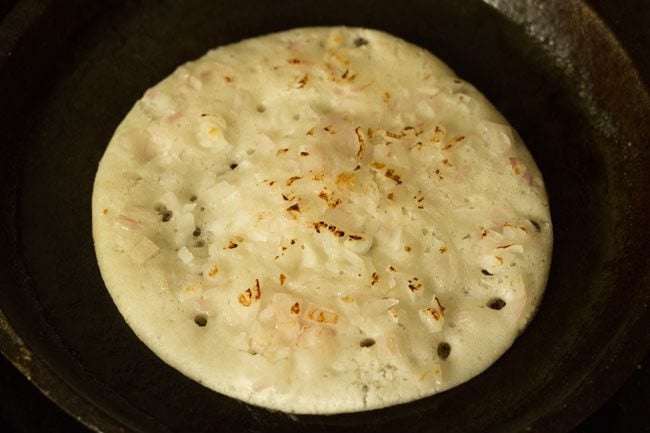
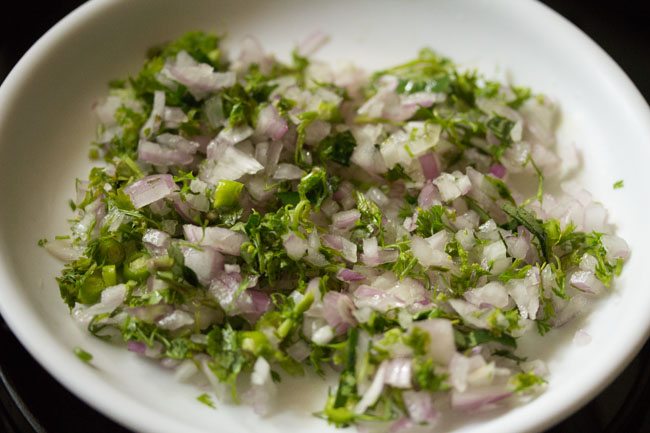
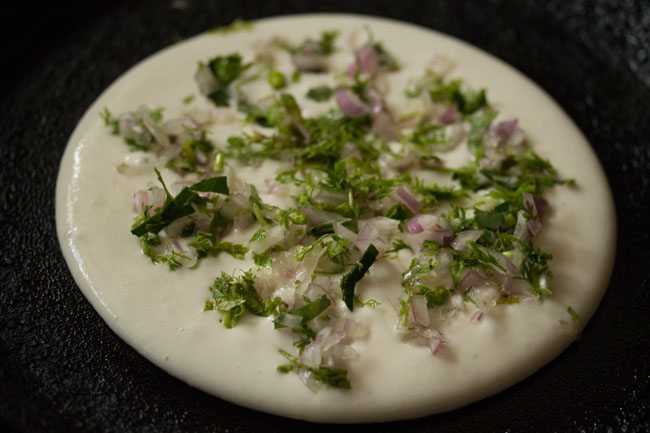
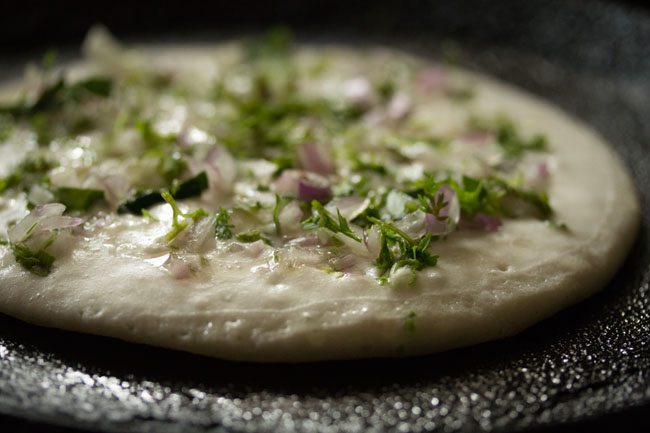
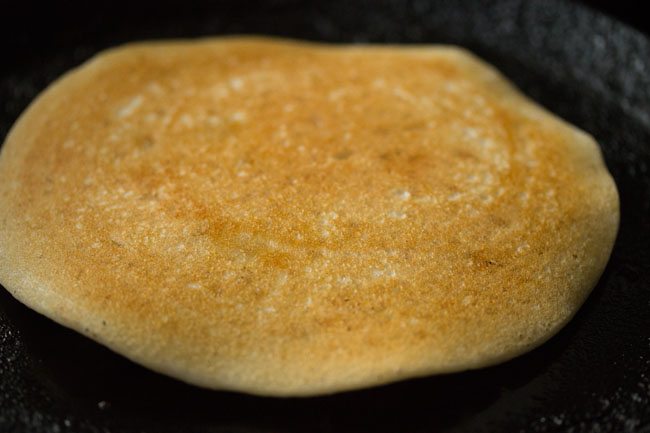
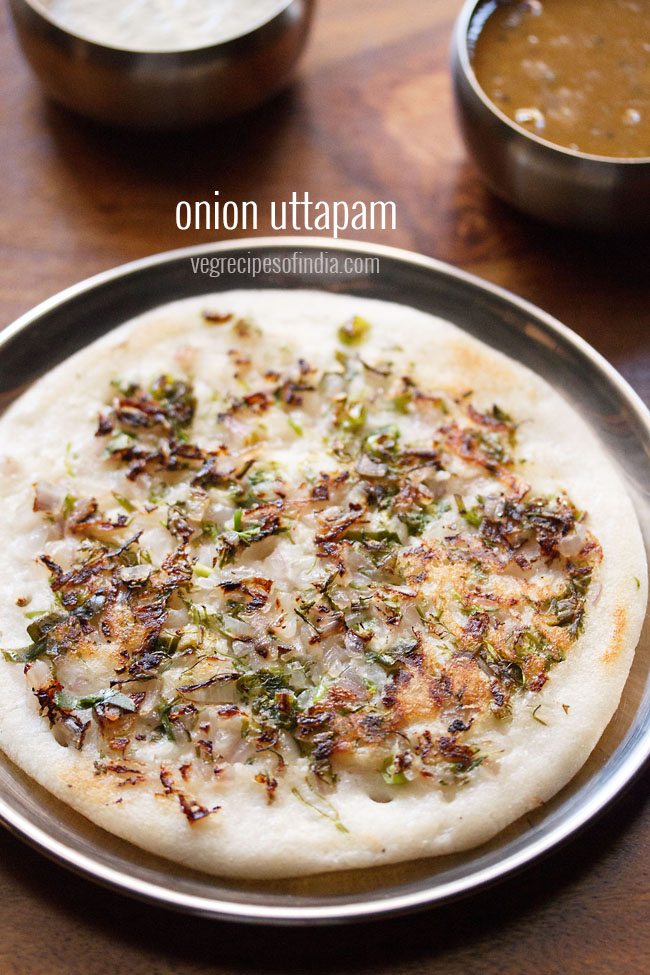








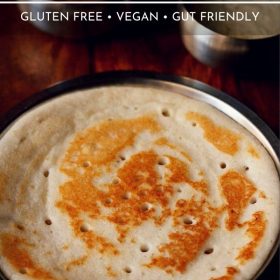
vvv tasty
Thanks the nice recipe. Vegrecipes is the best recipe site for south india. great format of recipe – quick to learn – no need to call anybody to understand the recipes.!! Great service to cooking
Welcome Vikas. Thanks for your positive feedback and kind words.
I want recipe for thatte idli that is famous in Bangalore
have taken the recipe request on file.
Yum.. Uthappam is healthy Indian home made pizza…
yes vibha you could call them indian pizza 😉
Hi ma’am, your recipes turn out perfect as always. I just want to know if we can add onion and coriander in to the batter and then spread it out on tava.??
thanks kiran. you can add coriander leaves in the batter. but if you add onions, it can be difficult spreading the batter. so i would suggest to finely chop the onions and add.